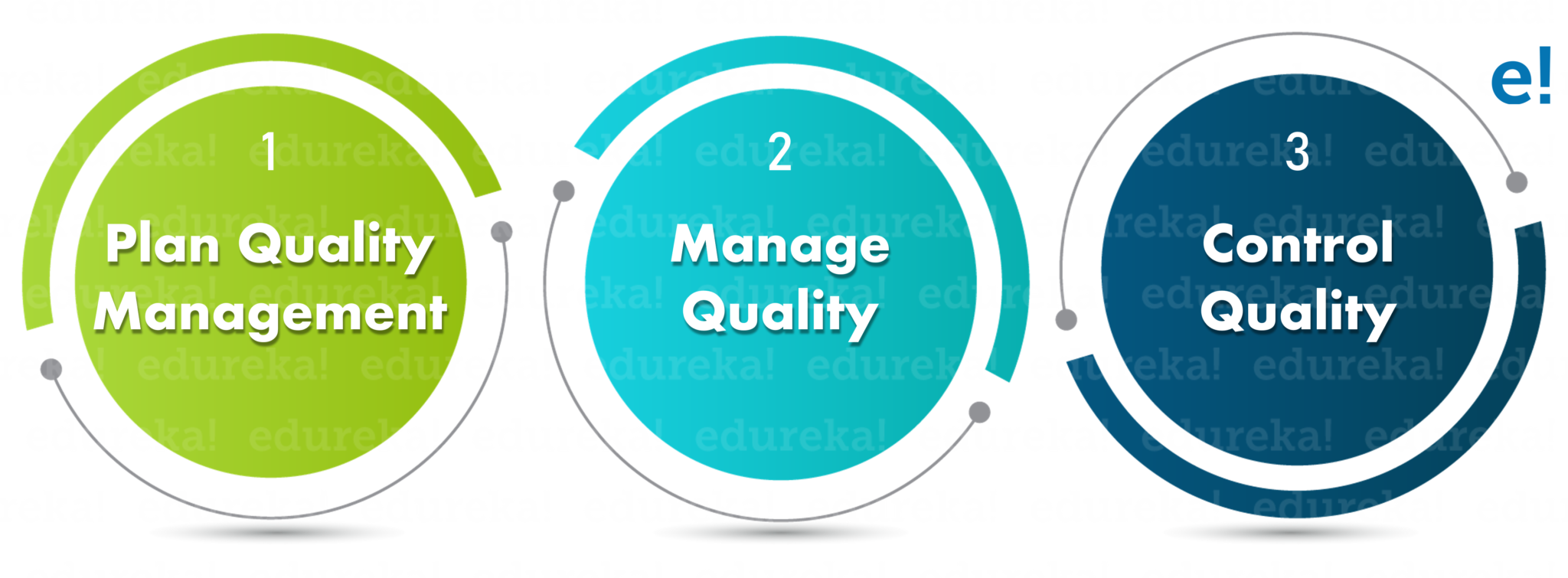PMP Certification Training
- 86k Enrolled Learners
- Weekend/Weekday
- Live Class
Quality is something that has to be maintained, irrespective of the size of the project. A project is considered to be successful only if it is able to satisfy all the customer needs and requirements. But how exactly a project manager ensures that his project will produce the desired quality product? Well, this is where Project Quality Management fits in and help in delivering an optimum quality result. Through the medium of this article, I will be giving you a complete insight into how quality management is performed for a project and the processes involved in it.
You may also go through the recording of Project Quality Management where our certified experts have explained the concepts in depth.
Let’s get started with our article!
According to PMBOK®Guide – Edition Sixth:
Project quality management is one of the ten Knowledge Areas of the project management framework. This knowledge area is exclusively dedicated to control and manage the quality of the project.
But what exactly does quality mean?
Well, at the most granular level, quality means how accurate a result is to the provided target. In terms of project management, quality means meeting all the customer needs and requirements. Now, project quality often is defined in the following terms:
Thus, project quality management aims to identify the required project quality, assess and control it, and finally attain the optimum results through specific processes and activities. In order to obtain the desired result, a project manager must take care of the following three key concepts of quality management:
These concepts help in accurately estimating what exactly a customer wants and what he actually needs. Once you have a clear understanding of these, you can effortlessly manage the project quality.
Now, that you are familiar with the various aspects of project quality, the next step will be to implement the project quality management plan. But before stepping into that, you must understand the importance or the benefits of Project Quality Management.
Below I have listed down a few of the major advantages of having a good project quality management:
Elevate your career to new heights with a PMP course online – where project management meets perfection!
The project quality management consists of 3 processes, namely:
Plan quality management is the first step in the project quality management process. This step generally involves identification of the required quality of the project and its final deliverables and then documenting the minutes of how your project will be meeting them. Plan quality management process will provide a proper path and guidance on how to maintain and verify the quality of the project throughout its lifecycle.
There are various inputs, tools and techniques, and outputs involved in this process which are listed in the table below:
| Inputs | Tools & Techniques | Outputs |
|
|
|
The second process of project quality management is Manage Quality. In this process, the quality management plan is put into execution in form of executable quality task/ activities. These quality activities incorporate the organization’s various quality policies and standards into the project. The main reason why we perform this is, it helps in increasing the probability of meeting the project quality goals while identifying the problem areas and reasons for poor quality of processes. This process is performed throughout the project management lifecycle and ensures that the processes being performed will suffice the required quality of the project.
Various inputs, tools and techniques, and outputs involved in this process are listed in the table below:
| Inputs | Tools & Techniques | Outputs |
|
|
|
This is the third and final process of project quality management that consistently monitors and records the results of the execution of various quality management activities. It helps in evaluating the project performance and thus ensuring their final deliverables are complete and meets the customer/ stakeholder requirements. Here the control quality process monitors the project outputs for determining whether they are working as they were intended to or not. This process is performed throughout the project while making sure that the project outputs fits perfectly within the organization standards & regulations, customer requirements, and specifications.
Project Control Quality consists of various inputs, tools and techniques, and outputs, which I have listed down in the below table:
| Inputs | Tools & Techniques | Outputs |
|
|
|
This brings us to the end of this article on project quality management. I hope now you have a clear picture of how quality impacts a project and why its proper management is required. This blog covered just one of Knowledge Areas involved in managing a project. If you wish to learn more about project management or project management certifications, you can check my other articles as well.
If you found this “Project Quality Management” article relevant, check out the PRINCE2 Certification Course by Edureka, a trusted online learning company with a network of more than 250,000 satisfied learners spread across the globe.
Find out our PMP Training in Top Cities/Countries
| India | Other Cities/Countries |
| Bangalore | UK |
| Hyderabad | US |
| Pune | Canada |
| Chennai | Australia |
| Mumbai | Singapore |
| Kolkata | Saudi Arabia |
Got a question for us? Please mention it in the comments section of this Project Quality Management article and we will get back to you.
 Thank you for registering Join Edureka Meetup community for 100+ Free Webinars each month JOIN MEETUP GROUP
Thank you for registering Join Edureka Meetup community for 100+ Free Webinars each month JOIN MEETUP GROUPedureka.co